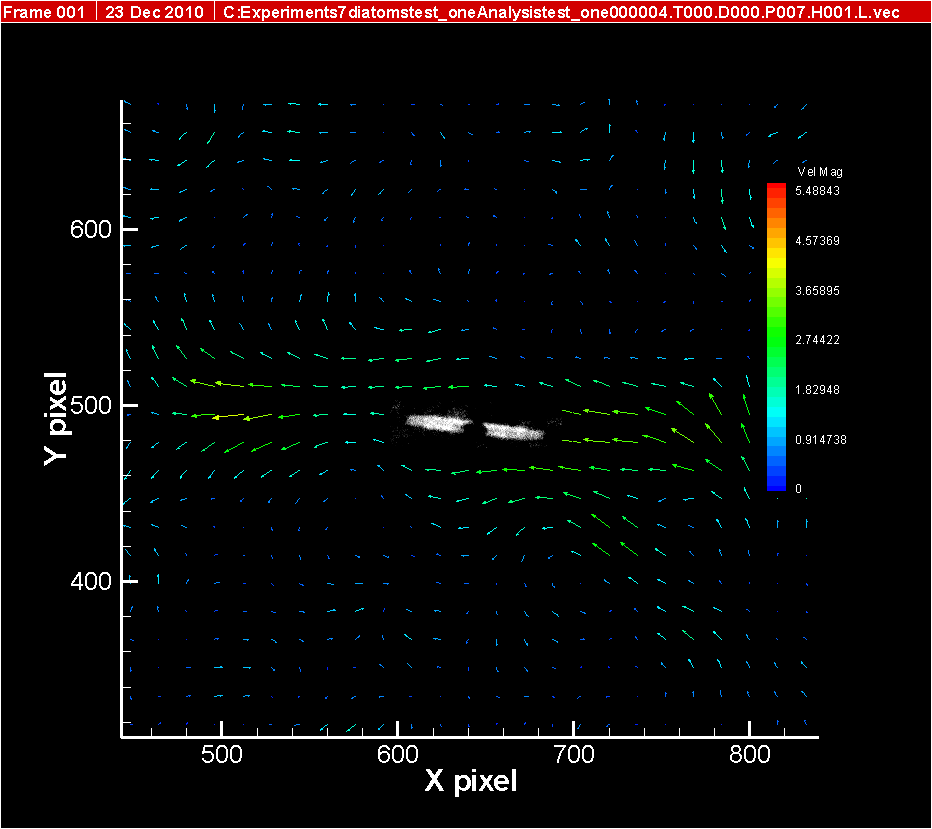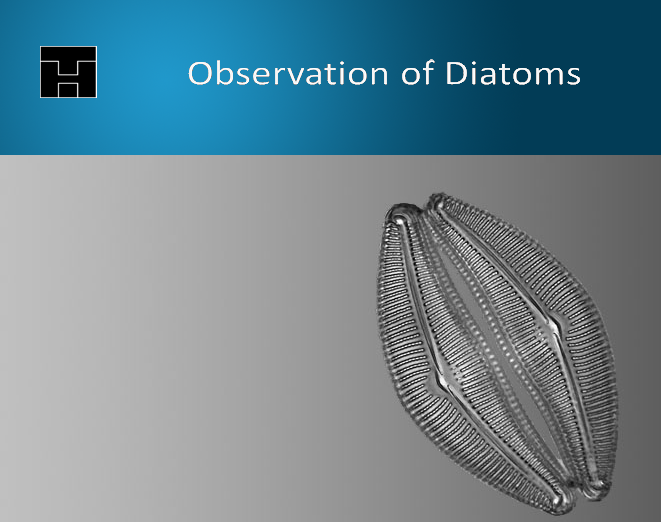We participated in Hacktoberfest 2021! Interested in participating? Attend a group meeting.
Bacillaria is a diatom genus in the Bacillariaceae family. Diatoms are a group of Eukaryotic microorganisms composed of cells with silica walls and that exhibit a unique life-history [1].
We are working with images from the species Bacillaria paradoxa, also known as Bacillaria paxillifer [2].
Figure 1. Drawing by Muller (circa 1792), who was the first to characterize Bacillaria colonies. [3]. Click to enlarge.
Cells (called filaments) are elongated and motile, sliding along each other, in stacked colonies. Cells are rectangular in side view. Two large plate-like chloroplasts are present, one near each end of the cell. The nucleus is located centrally. Cells are yellow-brown in color [1].
Figure 2. Examples of Bacillaria colonies and close-up images of single cells using Scanning Electron Microscopy (SEM). Courtesy Figures 27-30 in [3]. Click to enlarge.
The stacked colony moves by pairs of individual cells sliding against each other. This synchronized movement [4] is like an accordian in that the displacement ripples across the extent of the colony and results in large positional changes. This results in cyclic gliding movements resulting from the action of actin filament motors [5]. The primary movement pattern also has a number of interesting properties, including the potential for explosive kinetics resulting from higher-order derivatives of motion.
In this example, we used a mathematical model to define features in a library of microscopy movies, which allowed us to define features for extraction by a pre-trained model (DeepLabv3). From this, we were able to create digital models of Bacillaria cells for further analysis.
This mathematical model used five points on each cell to define a bounding box:
-
The two ends of the cell (1 and 2).
-
The midpoint of the line formed between 1 and 2 (3).
-
The edges of a cell (4 and 5) defined by drawing a line perpendicular to the axis defined by points 1, 2, and 3.
Figure 3. A diagram showing the five points on a sample cell. Click to enlarge.
To get more information about what is currently going on, check out the issues and subdirectories of this repository.
One of our goals is to use the data extracted from microscopy images to better understand biological processes such as the movement of a Bacillaria colony. One such example that has been conducted with coarse-grained phenotypic models is to model the hydrodynamics of filament movement through the water column [6].
Figure 4. Examples of Bacillaria filament moving through the water column (represented as a flow field). Click to enlarge.
To see where we are in this project, please explore this repo, check out our collection of open datasets, or read our publications:
Towards a Digital Diatom: image processing and deep learning analysis of Bacillaria paradoxa dynamic morphology. In Diatom Gliding Motility, Chapter 10.
The Psychophysical World of the Motile Diatom Bacillaria Paradoxa. In Mathematics and Biology of Diatoms, Chapter 9.
[1] Sabater, S. (2009). Diatoms. Encyclopedia of Inland Waters, 149-156. doi:10.1016/B978-012370626-3.00135-6
[2] Jahn, R. and Schmid, A.M.M. (2007). Revision of the brackish-freshwater diatom genus Bacillaria Gmelin (Bacillariophyta) with the description of a new variety and two new species. European Journal of Phycology, 42(3), 295-312. doi:10.1080/09670260701428864.
[3] Ussing, A.P., R. Gordon, L. Ector, K. Buczko, A.G. Desnitskiy and S.L. Van Landingham (2005) The colonial diatom Bacillaria paradoxa: chaotic gliding motility, Lindenmeyer Model of colonial morphogenesis, and bibliography, with translation by O.F. Muller (1783). Diatom Monographs, 5, 1-139.
[4] Gordon, R. (2016). Partial synchronization of the colonial diatom Bacillaria paradoxa. Research Ideas and Outcomes, 2, e7869.
[5] Poulsen, N.C., Spector, I., Spurck, T.P., Schultz, T.F., and Wetherbee, R (1999). Diatom gliding is the result of an actin-myosin motility system. Cell Motility and the Cytoskeleton, 44(1), 23-33.
[6] Kapinga, M.R.M. and Gordon, R. (1992). Cell Motility Rhythms in Bacillaria Paxillifer. Diatom Research, 7(2), 221-225.
Dr. Thomas Harbich's Internet Resource for Diatoms






